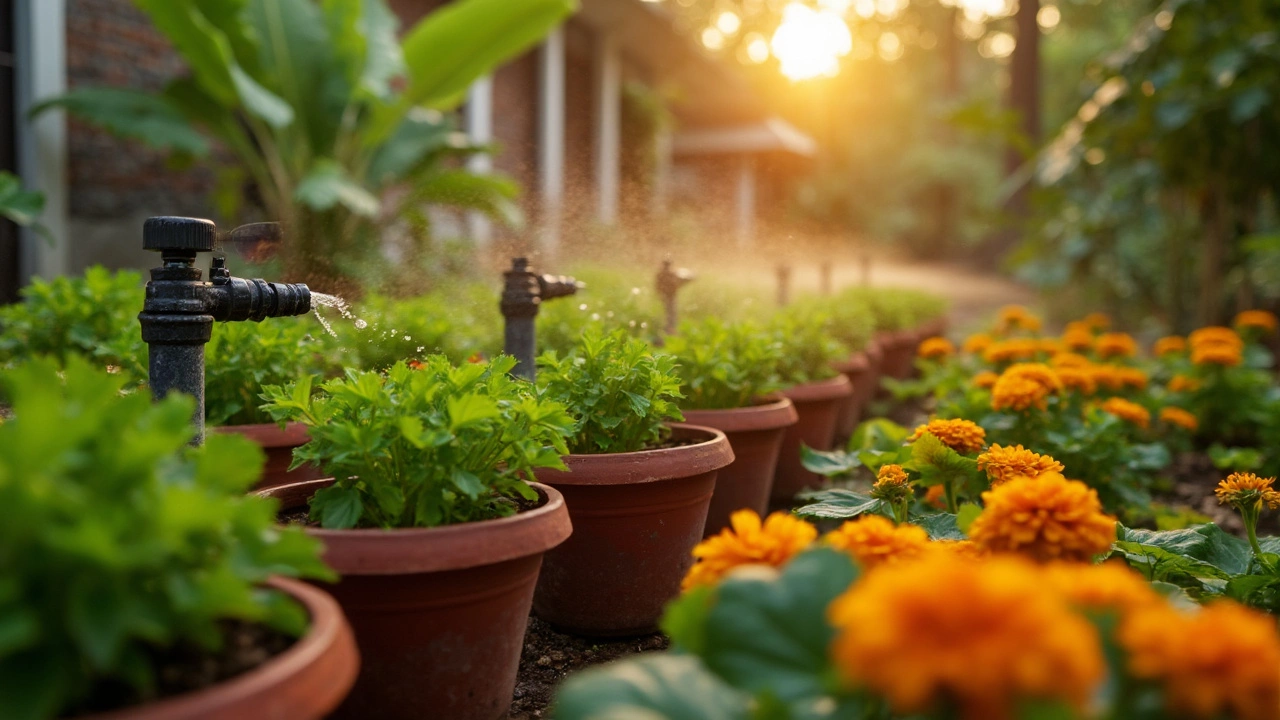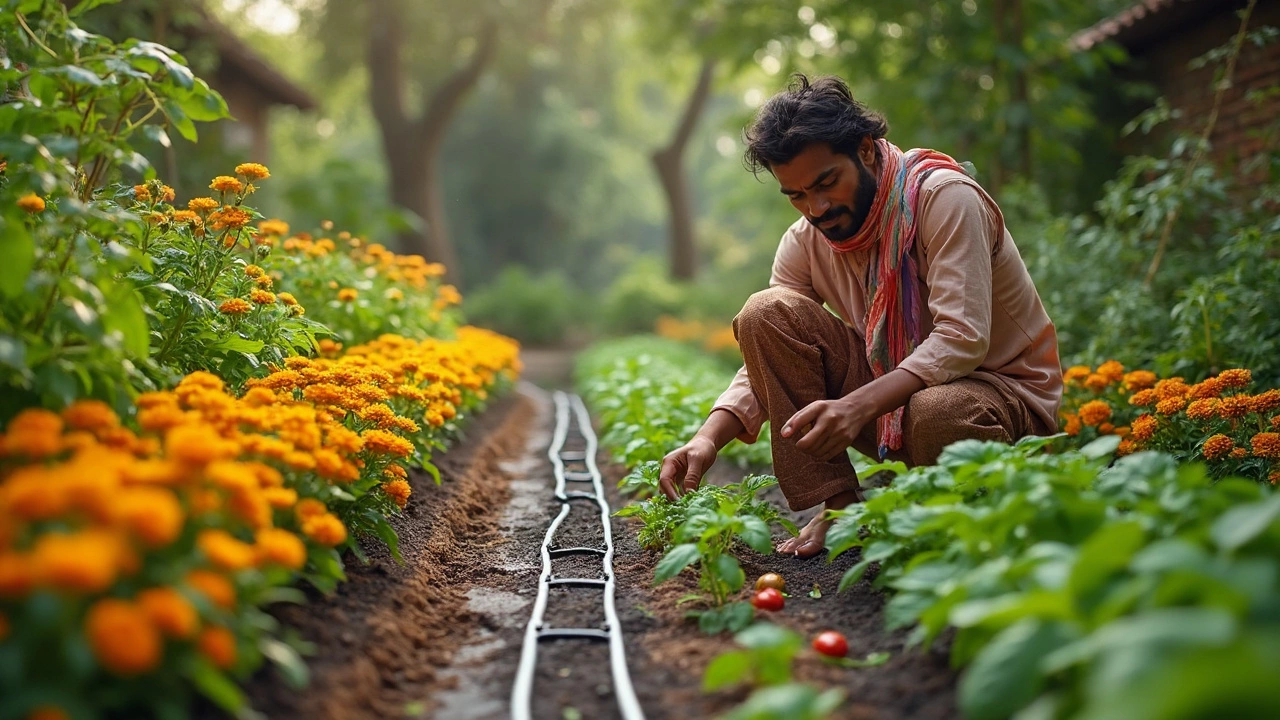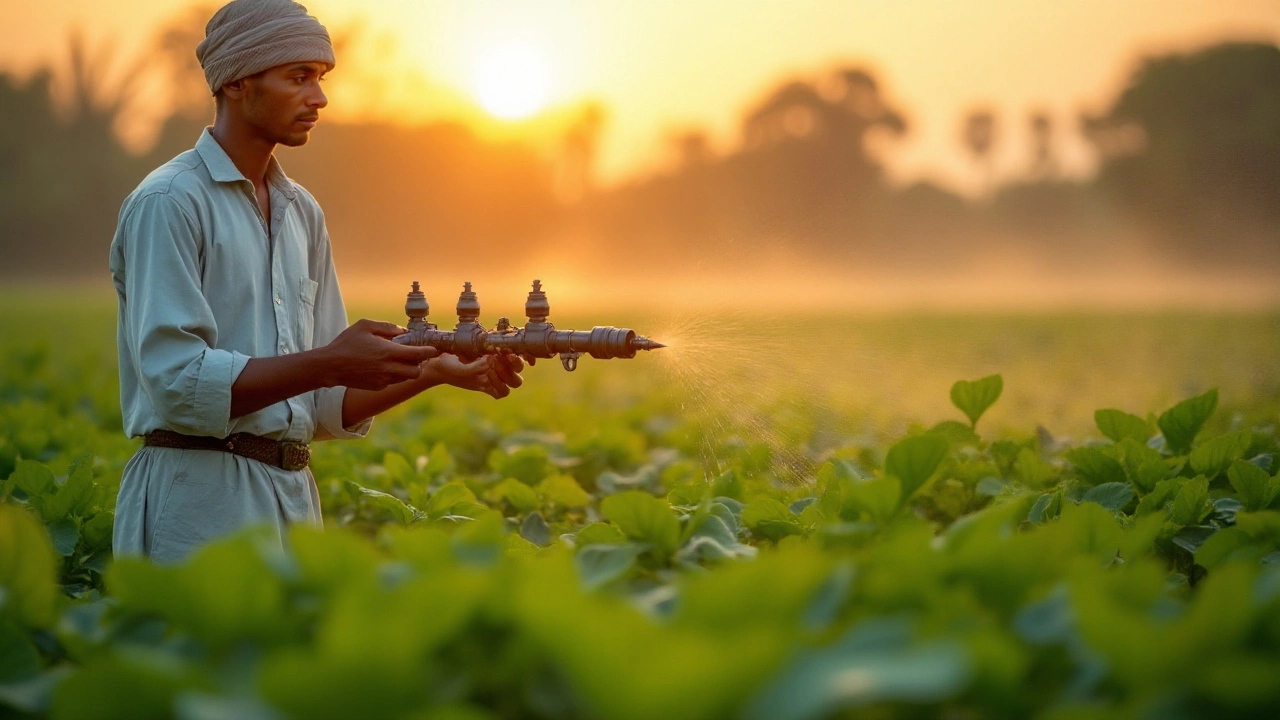Discover the true difference between a dripper and an emitter in garden irrigation. Get practical tips, examples, and surprising facts to help your plants thrive.
Garden Watering: Smart Ways to Water Plants in India
When it comes to garden watering, the practice of supplying water to plants in a way that supports growth without waste or damage. Also known as plant irrigation, it’s not just about turning on a hose—it’s about timing, technique, and understanding what your soil and plants really need. In India, where summers bake the earth and monsoons flood it, watering the same way all year round kills more plants than it helps.
Drip irrigation, a system that delivers water slowly and directly to plant roots through tubes and emitters is one of the most reliable methods for Indian gardens. But as many gardeners find out, clogged emitters and uneven flow can ruin its efficiency. Fixing these issues isn’t rocket science—it’s about cleaning filters, checking pressure, and replacing worn parts before your plants suffer. Then there’s soil moisture, how wet or dry the ground feels beneath the surface. Most people guess. Smart gardeners check it with their fingers. If the top two inches are dry, it’s time to water. If they’re still damp, wait. Overwatering is the silent killer of houseplants and balcony gardens alike, and it’s far more common than underwatering.
Watering isn’t just about the plant—it’s about the season, the pot, and the sun. A hydrangea on a south-facing balcony needs different care than a zinnia in the ground. A tomato in a small container dries out faster than one in a raised bed. That’s why knowing your watering schedule, a consistent plan for when and how much to water based on plant type and climate matters more than any gadget. In India, early morning is the sweet spot: less evaporation, no leaf burn, and time for roots to drink before the heat hits. Skip evening watering—it invites fungus and pests.
You’ll find posts here that tackle real problems: why your drip lines clog, how to save an overwatered basil plant, what to add to clay soil so it holds water without drowning roots, and which plants need less water in scorching months. Some are about balcony gardens, others about kitchen plots or native flowers that thrive with minimal fuss. There’s no one-size-fits-all rule. But there are clear patterns—what works in Delhi won’t always work in Kerala, and what saves a plant in winter might kill it in summer. This collection gives you the tools to read your garden, not just follow a calendar.
Ever wondered if you should run your drip irrigation lines under landscape fabric? This article tackles the pros and cons, explains how setup choices impact your garden, and dishes out tips for simple, long-lasting maintenance. Skip the guesswork with real-world advice, plus doable ways to avoid clogging and water waste. Perfect for DIY gardeners looking for practical irrigation hacks.
Drip irrigation is a water-efficient method that uses emitters and drippers as key components. Understanding the difference between these can help optimize water distribution in gardens and farms. Emitters are devices that regulate water flow to plants, while drippers are often interchangeable terms but refer to specific styles within the emitter category. This article explores their distinctions, applications, and tips for choosing the right one for your needs.


